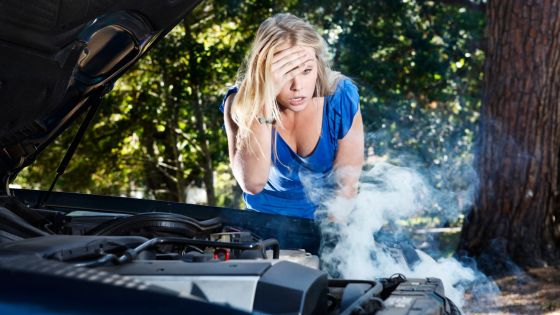Welcome to our comprehensive guide on handling car engine overheating. If you’ve ever found yourself in a situation where your car’s engine temperature started to rise unexpectedly, you know how important it is to act quickly and effectively. In this article, we will provide you with expert tips and insights on how to handle a car engine overheating, ensuring you can address the issue promptly and avoid potential damage to your vehicle.


Understanding Car Engine Overheating
Before we delve into the steps to handle an overheating car engine, let’s first understand why it happens. Car engine overheating occurs when the temperature of the engine exceeds the normal operating range, leading to potential malfunctions and even irreversible damage if not addressed promptly.
Identifying the Signs of Engine Overheating
Early detection of an overheating engine is crucial to prevent any severe consequences. Here are some common signs to look out for:
1. Temperature Gauge Rising
Keep an eye on your car’s temperature gauge on the dashboard. If you notice the needle creeping into the red zone or the temperature warning light illuminates, it’s a clear indication that your engine is overheating.
2. Steam or Smoke
The presence of steam or smoke coming from the engine compartment is a visible sign of overheating. Pull over to a safe location immediately if you observe these symptoms.
3. Strange Odors
A strong, unusual smell, often described as a sweet or burning odor, can indicate an overheating engine. If you detect such smells, it’s best to address the issue promptly.
4. Warning Lights
Modern cars are equipped with sophisticated warning systems. If the check engine light or any other warning lights illuminate, it’s crucial to take action to prevent further damage.
Steps to Handle Car Engine Overheating
Now that we understand the signs of an overheating engine, let’s dive into the steps you should follow to handle the situation effectively.
1. Safely Pull Over
As soon as you notice any signs of engine overheating, safely maneuver your vehicle to the side of the road or a designated parking area. It’s essential to stop driving immediately to prevent further damage.
2. Turn off the Engine
Once you have pulled over safely, turn off the engine. This will help prevent any additional heat buildup and minimize the risk of damage to the engine components.
3. Open the Hood
Allow the engine to cool down by opening the hood. However, exercise caution as the engine may still be hot. It’s important to avoid touching any hot surfaces to prevent burns.
4. Check Coolant Levels
Inspect the coolant reservoir. If the coolant level is below the recommended mark, it could be a possible cause of the overheating. Add coolant gradually and avoid opening the radiator cap while the engine is still hot.
5. Check for Leaks
Carefully examine the engine compartment for any signs of leaks, such as dripping coolant or pooling fluids. Leaks can lead to coolant loss, resulting in engine overheating. If you identify any leaks, it’s best to consult a professional mechanic.
6. Allow the Engine to Cool
After adding coolant or addressing any leaks, give the engine sufficient time to cool down before attempting to restart it. Waiting for at least 30 minutes is generally recommended.
7. Restart the Engine
Once the engine has cooled down, start it up and monitor the temperature gauge. If the gauge returns to a normal range, you can proceed with caution. However, if the engine continues to overheat, it’s crucial to seek professional assistance immediately.
Preventive Measures
Prevention is always better than cure. To reduce the risk of engine overheating, follow these preventive measures:
1. Regular Maintenance
Schedule regular maintenance checks, including coolant flushes and radiator inspections, as recommended by your vehicle’s manufacturer. Proper maintenance can help identify and address potential issues before they escalate.
2. Coolant Levels
Regularly check the coolant levels in your vehicle and top up if necessary. Remember to use the recommended coolant type specified in your car’s manual.
3. Cooling System Inspection
Periodically inspect the cooling system for any signs of damage or wear. Cracked hoses, loose connections, or a faulty thermostat can contribute to engine overheating.
4. Avoid Overloading
Avoid overloading your vehicle, especially in hot weather conditions. Excessive weight can strain the engine, leading to overheating.
Conclusion
Handling a car engine overheating situation requires prompt action and preventive measures. By following the steps outlined in this guide and prioritizing regular maintenance, you can effectively address an overheating engine and keep your vehicle running smoothly. Remember, if you’re unsure or the problem persists, it’s always best to consult a professional mechanic.
Frequently Asked Questions (FAQs)
Can I Continue Using If My Car’s Engine Is Overheating?
No, it is incredibly encouraged to tug over adequately and turn off the engine as quickly as you word signs and symptoms of engine overheating. Continuing to force with an overheating engine can purpose severe harm.
How Lengthy Ought To I Look Ahead To The Engine To Quiet Down Before Including Coolant?
It’s generally really useful to wait for at least half-hour to allow the engine to calm down earlier than opening the coolant reservoir and including coolant. This helps prevent the hazard of burns and guarantees a secure running temperature.
What Should I Do If I Do Not Have Coolant Conveniently To Be Had?
If you do not have coolant available, you can use water as a transient solution. However, it is essential to consult an expert mechanic as quickly as viable to make certain the proper coolant combination is brought into your car.
Can I Drive My Automobile After Adding Coolant If The Engine Has Cooled Down?
If the engine has cooled down, and you’ve delivered coolant to the precise degree, you may cautiously restart your automobile. However, it’s crucial to screen the temperature gauge at some stage in your adventure and seek expert assistance if the engine continues to overheat.
Is It Normal For My Automobile’s Engine To Heat Up In Warm Weather?
It’s every day for the engine to heat up to a point, especially in hot climate conditions. However, if the temperature gauge exceeds the normal variety or the caution lighting spark off, it indicates an overheating issue that needs on-the-spot attention.

























